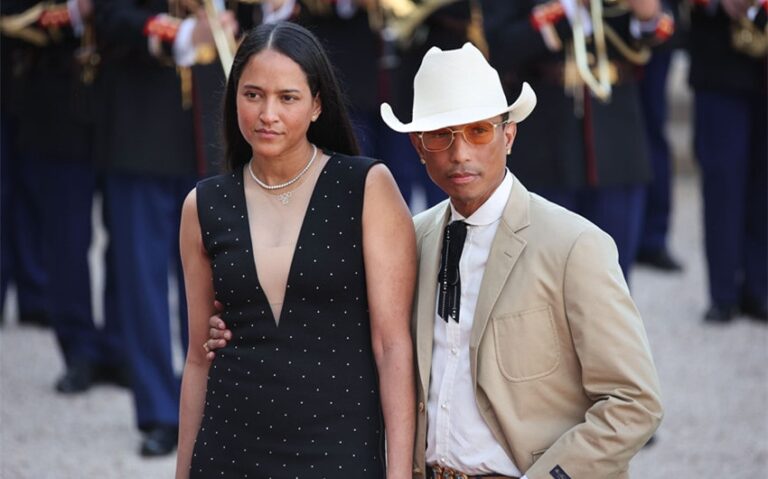Ed and Lorraine Warren Net Worth: What the Famous Paranormal Duo Really Left Behind
When people ask Ed and Lorraine Warren net worth, they’re usually thinking about more than just a dollar amount. They’re thinking about the ghost-hunting couple behind The Conjuring movies, the infamous Annabelle doll, and some of the most talked-about “true” haunting stories of the last fifty years. Their lives blended religion, investigation, storytelling, and eventually Hollywood—so it makes sense to wonder how much money that mixture actually produced.
Because both Ed (who died in 2006) and Lorraine (who died in 2019) are gone, and because they never publicly disclosed their finances, there’s no official figure. Modern estimates vary a lot, but based on what we know about their careers, their property, and later film deals, a realistic estimate puts their combined estate somewhere around $8–12 million. That’s a comfortable fortune—not billionaire horror-movie money, but far more than most self-taught paranormal investigators ever see.
Who Were Ed and Lorraine Warren?
Before they were movie characters, Ed and Lorraine Warren were a real married couple from New England. Ed Warren, born in 1926, described himself as a self-taught demonologist, author, and lecturer. Lorraine Warren, born in 1927, called herself a clairvoyant and trance medium. Together, they founded the New England Society for Psychic Research (NESPR) in 1952, which they often said was the oldest ghost-hunting group in New England.
For decades, they investigated cases of alleged hauntings and demonic oppression in the United States and abroad. They worked with priests, families, and occasionally law enforcement, positioning themselves not just as curiosity-seekers but as spiritual first responders. Some people saw them as sincere and brave; others saw them as opportunistic, theatrical, or both. Either way, by the 1970s they had become the closest thing America had to celebrity ghost hunters.
The Famous Cases That Built Their Legacy
Long before The Conjuring existed, certain cases made the Warrens famous.
The Amityville case in New York was one of the earliest lightning rods. After the Lutz family fled their Long Island home, claiming it was haunted by a dark presence connected to a prior murder, the story exploded in books and films. The Warrens went to the house, declared it demonically infested, and became part of the legend.
Across the Atlantic, they visited the home of the Enfield Poltergeist in London, where a single mother and her daughters reported violent, ongoing disturbances. This case later became the core inspiration for The Conjuring 2, and footage of the family remains iconic in paranormal circles.
Then there’s Annabelle—in real life, a Raggedy Ann doll that the Warrens claimed was used as a conduit by an inhuman spirit. They insisted it was so dangerous that it needed to be locked in a special glass case, blessed regularly by a priest. Annabelle eventually became the star of her own film series, but for years she was simply the centerpiece of the Warrens’ own private museum.
Those high-profile cases fueled interviews, books, and TV specials—which brings us to how they actually made a living.
How Ed and Lorraine Warren Made Money in Their Lifetimes
Lectures and Speaking Tours
One of the Warrens’ most consistent income sources was speaking. They spent decades touring colleges, churches, and community centers, giving slide shows and talks about hauntings, demonic activity, and their case files. Tickets, honorariums, and appearance fees added up over the years. For many people, attending one of these lectures was their first encounter with Ed and Lorraine as real, breathing people rather than names in a spooky story.
Speaking tours don’t usually make people rich overnight, but when you do them for decades, they can produce a steady, reliable income—especially if you’re also selling books, photos, or tapes at the back of the room.
Books, Media, and Case Files
Writing and media were another key revenue stream. The Warrens wrote or co-wrote numerous books about their investigations, often with journalists or co-authors who helped shape their case notes into narrative form. Those books earned royalties and helped solidify their status as authorities on demonic phenomena.
Television producers also found them useful. They appeared in documentaries, talk shows, and paranormal specials, sometimes being paid directly for participation, sometimes benefiting indirectly through boosted book and lecture sales. Over time, their case files—full of photos, interviews, and audio recordings—became a valuable intellectual property library.
Those archives later became the raw material that Hollywood writers and producers mined for The Conjuring and its spin-offs.
The Occult Museum and Tours
The Warrens’ Connecticut home housed what they called the Warren Occult Museum, a cramped but atmospheric room filled with haunted objects: paintings, masks, artifacts, and, of course, Annabelle. Visitors could book tours and hear Ed and Lorraine tell the stories behind each item.
Tour fees provided another recurring income source. Guests weren’t just paying to look at dusty objects; they were paying for proximity to the Warrens’ stories and to the fear they helped create. Over time, the museum became a kind of physical anchor for their brand—part tourist attraction, part shrine, part business asset.
Case Consultations and Paranormal Work
The Warrens also made money directly from some of their investigations. While they stated that they helped many families for free, especially when clergy asked them to step in, there are accounts of them charging for extensive consultations, expert-witness roles, or ongoing involvement in particularly complex cases.
This wasn’t the kind of yes-or-no service you might get from a plumber. Often, the value they provided (at least in the eyes of their clients) came in the form of guidance, rituals, and continued visits. Payments for that kind of work can be hard to quantify from the outside, but they did make up part of the puzzle.
Hollywood’s Impact on Their Wealth
The biggest single factor in Ed and Lorraine Warren net worth wasn’t a haunted house or a demonology lecture—it was Hollywood. In 2013, The Conjuring introduced dramatized versions of the Warrens to a mass audience. The film did far better than expected and eventually spawned one of the most lucrative horror franchises ever.
Because the movies are based on the couple and many of their cases, the studio needed the rights to use Ed and Lorraine’s names, likenesses, and case histories. Those agreements, while private, almost certainly involved compensation—both upfront and potentially in the form of backend payments or continued licensing. Lorraine even served as a consultant and appeared in promotional material for the early films, which implies formal financial arrangements.
The total box office for the wider Conjuring Universe is well over a billion dollars, but the Warrens or their estate only received a small slice of that. Even so, for a couple whose earlier income came mainly from books, tours, and museum tickets, Hollywood money would have significantly increased the value of their estate—especially in the last decade of Lorraine’s life and the years immediately after.
So, What Is Ed and Lorraine Warren Net Worth?
Different websites throw around very different numbers. Some articles suggest they left behind around $4 million combined; others inflate that to $20 million or more, often without explaining how they arrived at those figures.
If you blend what we know—the modest but steady income from lectures and books, the added value from the museum and case files, and the later but meaningful boost from film-related deals—a realistic estimate for Ed and Lorraine Warren’s combined net worth at its peak sits around $8–12 million. That range accounts for pre-Hollywood earnings, property and collection value, and reasonable (not fantastical) participation in the movie franchise’s success.
Real Estate, Assets, and the Fate of the Occult Museum
We do have at least one concrete financial data point: their Connecticut property. In 2025, the Warrens’ Monroe home and attached Occult Museum were sold to comedian Matt Rife and YouTuber Elton Castee for roughly $1 million. The artifacts themselves, including Annabelle, were not sold; they remain owned by the Warrens’ daughter, Judy, and her husband, Tony Spera, who leased the items to the new homeowners under a caretaker arrangement.
That sale gives us a hard anchor: at least part of the estate was worth seven figures on its own. Add in the appraised (if hard to quantify) value of the artifacts, plus accumulated savings, royalties, and licensing income, and the multi-million-dollar picture makes sense.
Controversy, Reputation, and Value
The Warrens have always been polarizing. Skeptics, some journalists, and even former collaborators have suggested that they embellished or dramatized events to make better stories—and better money. Supporters see them as devout Catholics trying to help people under spiritual attack.
Financially, controversy is a double-edged sword. Criticism can lead to legal disputes or reputational damage, but it can also keep a brand alive. Every new documentary or think piece asking “Were the Warrens frauds?” drives more curiosity, more movie rentals, more book purchases, and more visits to anything connected to their name. In effect, the debate itself helps maintain the value of their intellectual property.
How Their Estate Still Earns Money
Even after both Ed and Lorraine passed away, their work continues to generate income. NESPR remains active under the direction of their daughter and son-in-law. New movies and spin-offs keep their cases in public view. Older books are reprinted or re-discovered by horror fans, while streaming platforms push documentaries and films based on their investigations.
Plans to relocate and reopen the Occult Museum in a commercially zoned location mean more tours, more events, and more opportunities for collaborations with TV shows, YouTubers, and paranormal influencers. Each of those activities feeds back into the estate through licensing and usage deals.
Featured Image Source: hollywoodreporter.com






